

©FAO/FELIPE RODRÍGUEZ
Shimbwe Juu Kihamba Agroforestry Heritage Site, United Republic of Tanzania
Diversification as a strategy for efficient use and management of resources
THE SYSTEM
Shimbwe Juu is a small village of the Chagga community, located on the slopes of Mount Kilimanjaro. In a semi-tropical climate, the villagers have practised agroforestry for centuries.
In 2013, the Government of the United Republic of Tanzania proposed Shimbwe Juu Kihamba Agroforestry Heritage Site as a GIAHS in the hope of finding sustainable solutions to the erosion of culture and the forest, and to improve environmental and economic opportunities.
The Shimbwe Juu Kihamba Agroforestry Heritage Site is an example of how synergy between humans, animals and the forest can contribute to a sustainable environment, using an integrated multilayered system to help overcome the challenges of soil infertility and water scarcity.
The vegetation structure of the kihamba (home garden) system comprises four main layers. The uppermost layer is formed by closely spaced trees, which provide shade, medicine, fodder, fruit, firewood and timber. Multiple varieties of bananas are grown underneath the trees. Coffee shrubs grow beneath the bananas and various vegetable species grow under the coffee. This multilayer system maximizes the use of limited land and provides a large variety of local foods and cash crops, such as banana, cassava, yams, taros, ginger and pineapple all year around.
… (Before) we used … very strong pesticides but …(when) the project came we stopped doing that. In this whole village no one is using those industrial pesticides, we are using natural pesticides … (that we learned about) from the project.
Candida Coffee producer and member of the council village and chairperson of women’s organizationKihamba are irrigated by furrows collecting runoff and by canals from rivers originating in the montane forest. These home gardens feature extraordinary biodiversity: over 500 different plant species, including 400 that are not cultivated but preserved in their natural habitat. Farmers raise animals such as cattle and chickens to enhance the nutritional status of their households and to increase farm income through the sale of milk, eggs, and other products.
This traditional system faces serious threats, including land scarcity due to population growth, the outmigration of young people which also disrupts the transmission of knowledge from one generation to the next, as well as changes in dietary habits, land use changes and fragmentation.
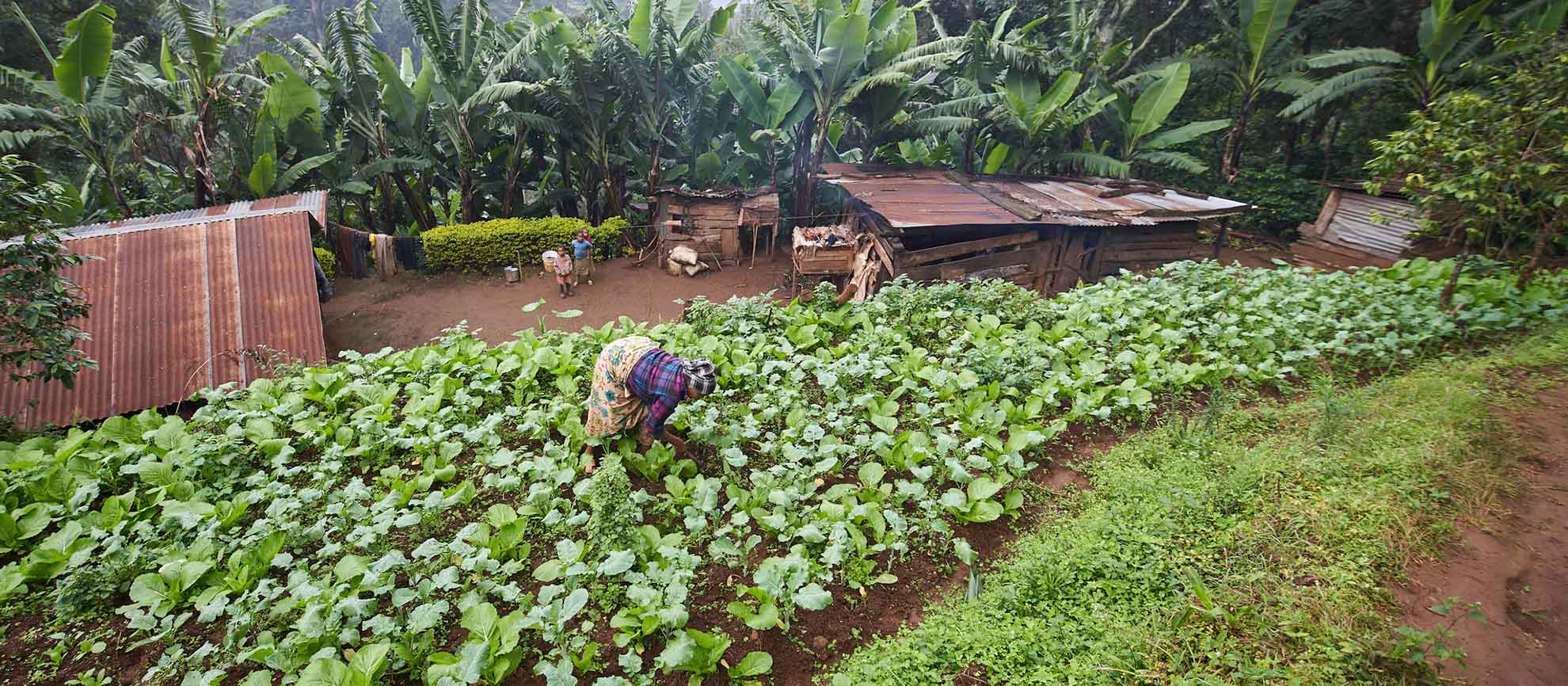
Female farmer harvesting vegetables in the small village of the Chagga community
©FAO/Felipe Rodríguez
MANAGING THE KIHAMBA
The community bears a strong responsibility for custodianship of its agricultural land. The kihamba is central to the identity and culture of the Chagga people; it is the focus of social and ceremonial life. People are born, come of age, marry and are buried on their kihamba.
Women in Chagga societies are the backbone of home-based farming as in kihamba.
Arpakwa M. Ole Sikorei Member of Community Conservation and CultureTraditionally, the kihamba is managed by the entire family with a clear division of labour: men prune coffee trees, remove unwanted suckers from banana plants, clear water canals and irrigate the gardens, while women are responsible for collecting firewood, weeding, feeding cattle, cleaning livestock sheds and milking.
Women also constitute more than 80 percent of the workers involved in coffee farming, especially during the harvest period. Selected men take on the role of supervisors of the kihamba. This responsibility is passed on to their sons who, starting from a young age, are daily involved in related duties.
LEARN MORE: Kihamba – Chagga home gardens on the slopes of Mount Kilimanjaro
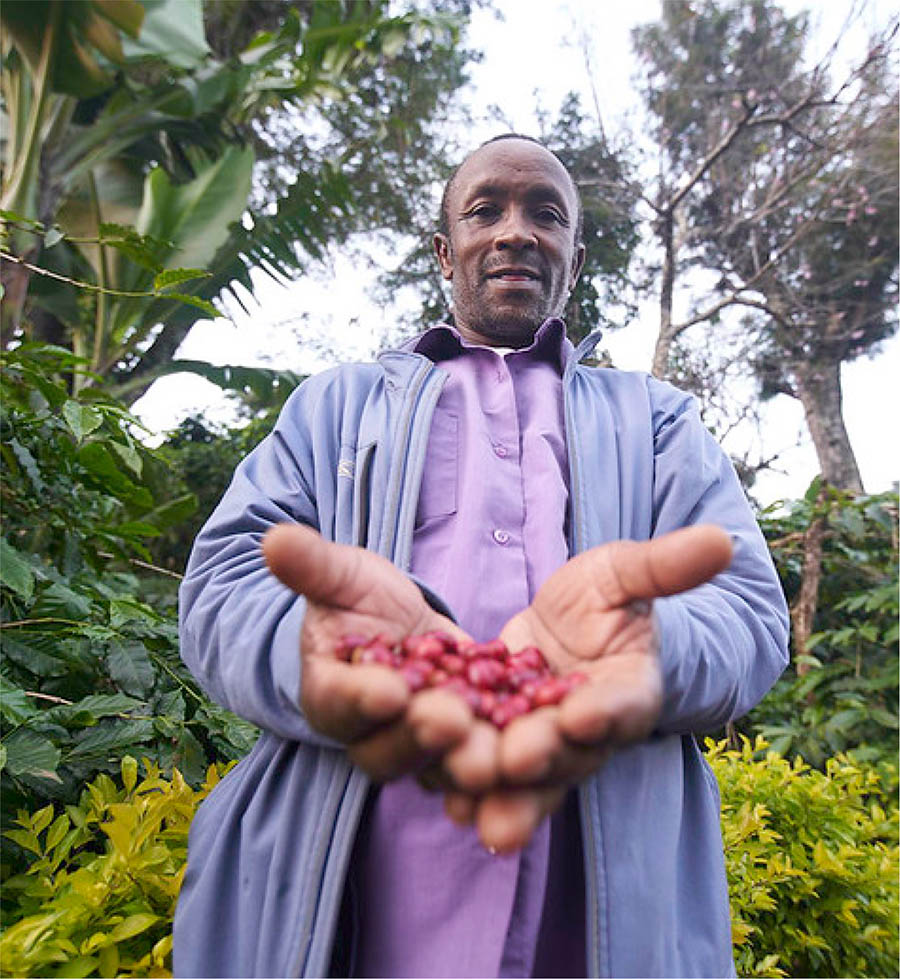
Farmer with fresh harvested coffee beans
©FAO/Felipe Rodríguez
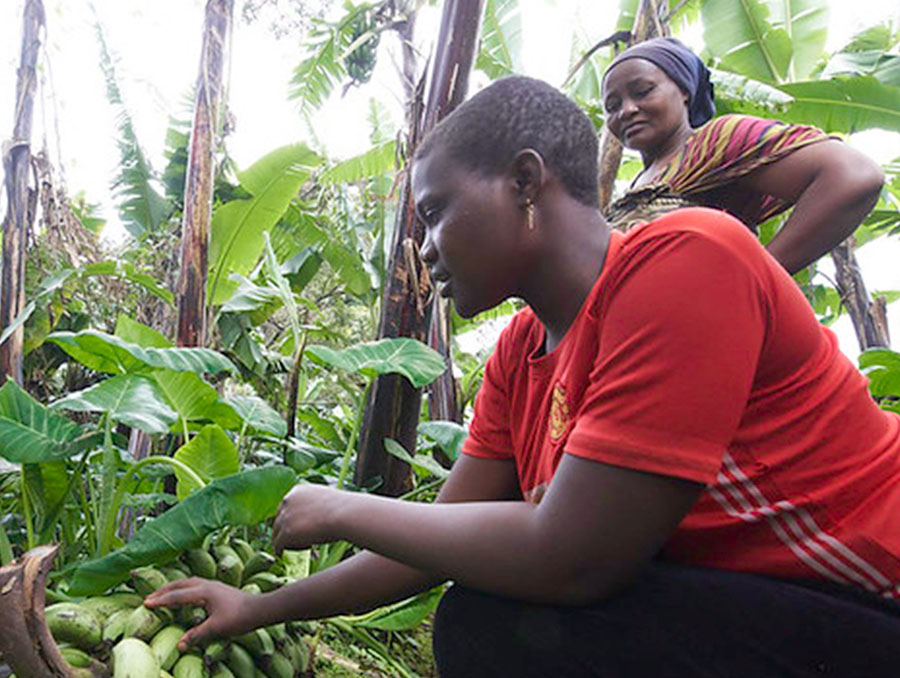
Chagga women selecting bananas
©FAO/Felipe Rodríguez
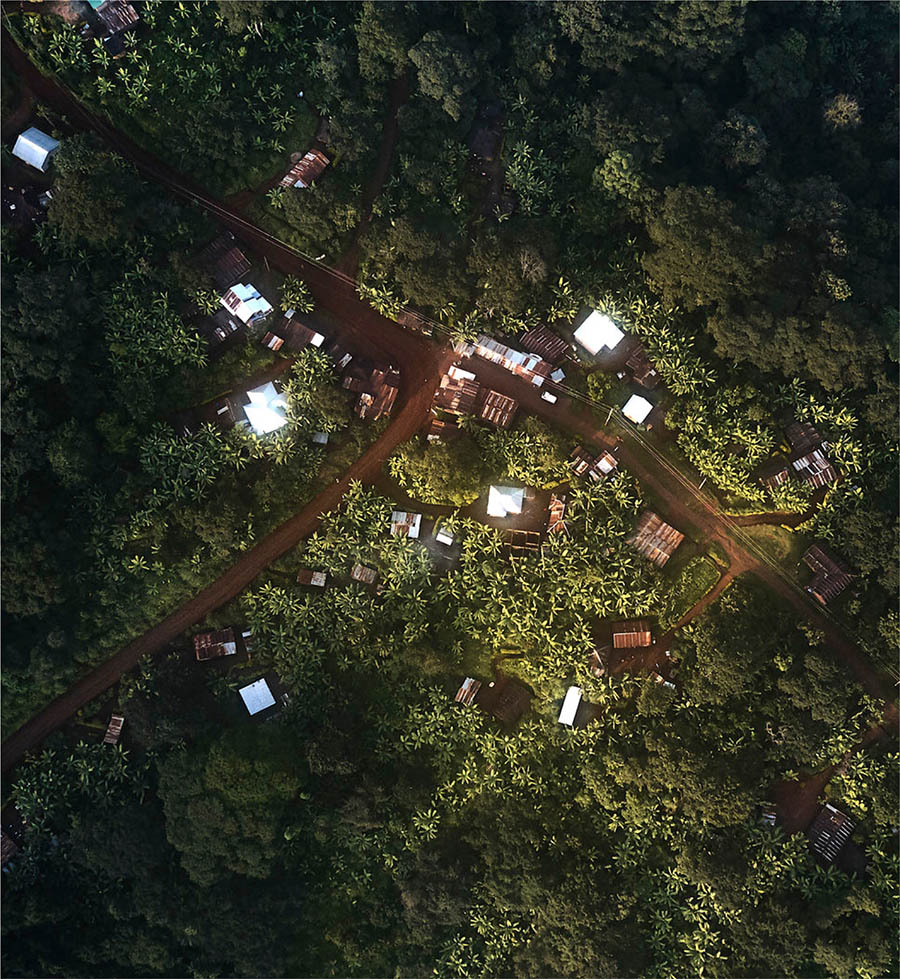
Bird’s-eye view of Shimbwe Juu village
©FAO/Felipe Rodríguez
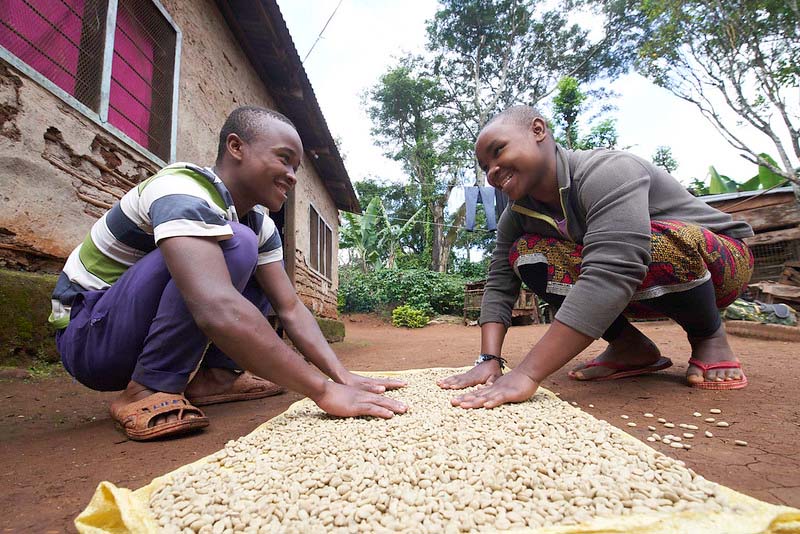
Growing coffee trees following traditional methods represents a sustainable opportunity for youth in Shimbwe Juu village
©FAO/Felipe Rodríguez
ACHIEVEMENTS
Since the Shimbwe Juu Kihamba Agroforestry Heritage Site was designated a GIAHS site in 2013:
- The Shimbwe Juu community have been trained in crop improvement and organic coffee farming using integrated pest management.
- Farmers have been provided with more than 12 000 coffee seedlings to replace old coffee trees.
- The community have been certified as organic coffee farmers, linking them with the organic coffee market.
- The Kilimanjaro Native Cooperative Union (KNCU) has established a coffee sales point in the village to facilitate marketing
- Sixty farmers have been trained in the establishment and management of vanilla plants and provided with cuttings for planting.
- FAO has overseen the establishment and official registration of the Engaresero Eramatare Community Development Initiative, a community-based organization (CBO), as part of strengthening sustainable tourism. The initiative offers guided tours to the growing number of visitors that the region saw before the COVID-19 pandemic. Due to the initiative the number of tourists has increased.
RESOURCES
Africa | Globally Important Agricultural Heritage Systems (GIAHS) | Food and Agriculture Organization of the United Nations | GIAHS | Food and Agriculture Organization of the United Nations (fao.org)

